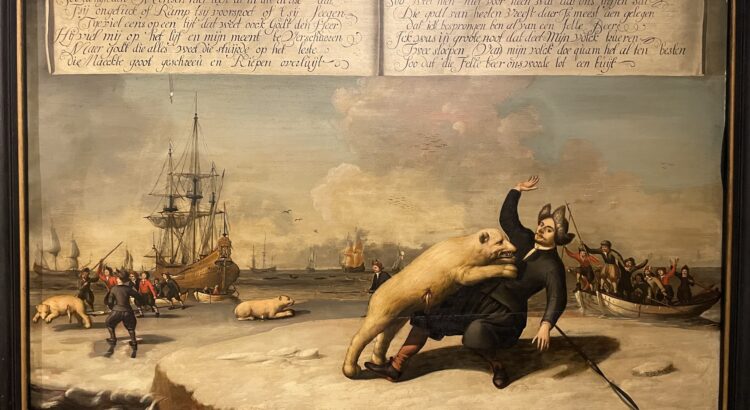Did you ever see cutlery made from an animal? From a real animal, not those engraved Miffy forks and spoons you got when you were younger. You have probably seen various types of cutlery in a museum: spoons, forks, knives, glasses, plates or dishes, made from gold or silver. Well, this cutlery is made from whale baleen. The spoon and fork are used to mix the dressing of a salad with the lettuce and afterwards serve up the salad. The combination is called a ‘slacouvert’ in Dutch.
This ‘slacouvert’ , the fork and spoon, are on display in the Zaans Museum in Zaandam. The manufacturing period of the pair is unfortunately unclear, but it is most likely made in the eighteenth century since the whaling in the Zaanstreek and Netherlands was at its peak in this period. The fork is 21,3 cm wide and 2,6 cm in depth. It has four branches and is curved at the end. The spoon is 22 cm wide and 4,6 cm in depth. Both stems become thicker and then narrower towards the pointed end.
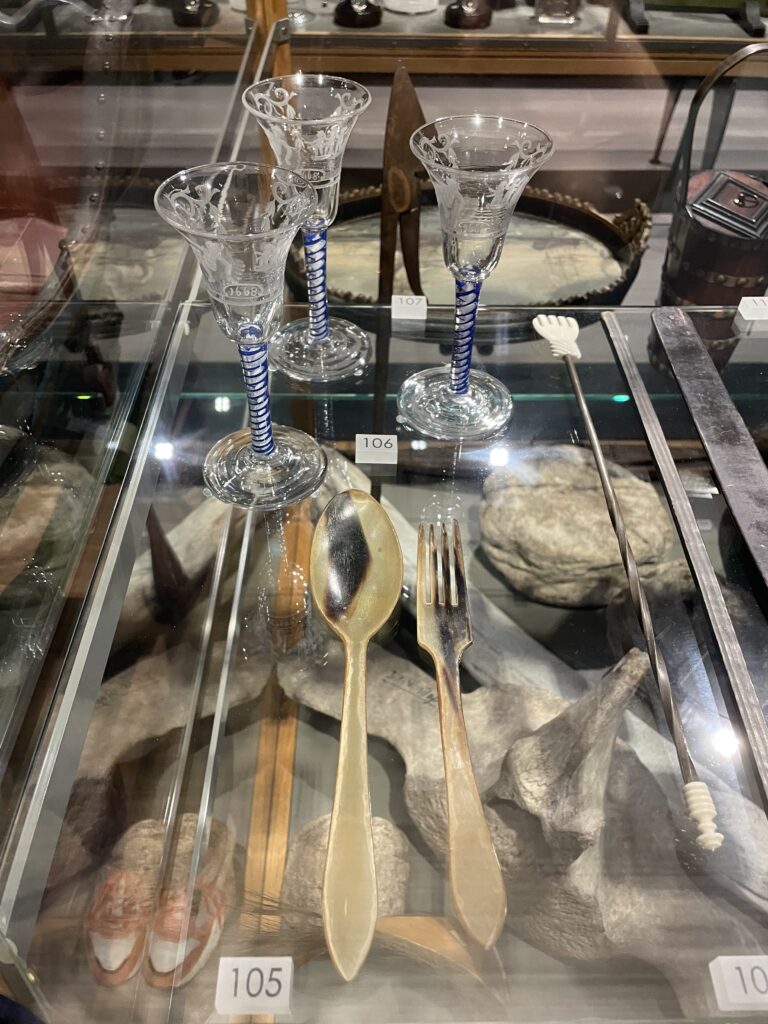
History of cutlery
Cutlery in the Western culture includes all the utensils used in preparing, serving, and eating food. The most important and most used items of cutlery are the knife, fork, and spoon. These utensils emerged together for the first time in the eighteenth century. Before that, the common practice was to only use knife and later, a knife and a spoon. Especially among travellers it was a habit to bring your own knife and spoon when you were invited by a host or hostess to join them for a meal. Forks came into the picture in the seventeenth and eighteenth century. Some sources say the reason for this was to keep the pleated collars clean that were in fashion at that time, but it remains quite unclear why and how the practice of eating with a fork was introduced.
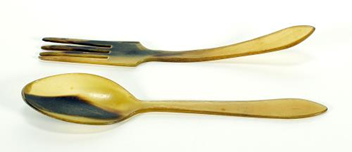
What is a baleen?
A baleen is an elastic, bristle-like substance containing keratin from the beard of a baleen whale and is a type of filter-feeding system. The whale opens its mouth underneath the water and takes in water. Then the whale pushes the water out of its mouth and the baleen filter food for the whale to remain. On one side of the baleen are hairy fringes which are called baleen hair. The baleen are arranged among the upper jaw of the whale. Some whale species have longer baleen and others only use one side of their baleen.
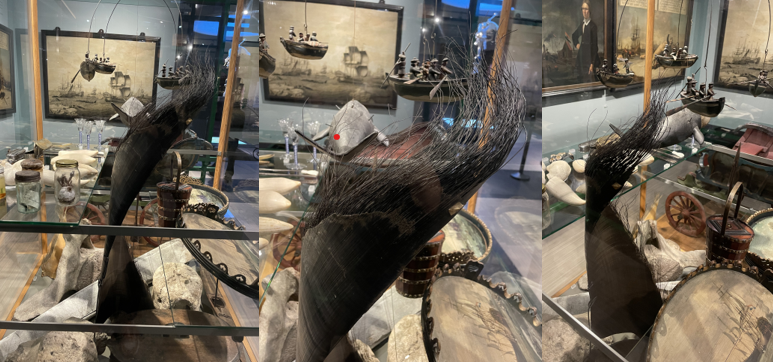
Whaling in the Netherlands and the ‘Zaanstreek’
Although this salad cutlery is peculiar and uncommon, baleen were not in the Netherlands. The history of whaling started mid-seventeenth century. New trade routes to Asia through the Arctic Sea were explored because the route past the coast of Africa became too dangerous for Dutch trading vessels. This exploration did not result in a new trade route but the Dutch did find many whales. They learned how to hunt the whales from the Basques, living in the south of France and north of Spain, who hunted whales for a long time already.
The ‘Zaankanters’, people who were living in the area around Zaandam, were known for their shipping companies and decided to join the whaling. In the eighteenth century around thirty ships sailed to the Arctic Sea. The whaling was not without risk. Lots of men died or got wounded from encounters with whales or polar bears and the temperature and weather in the Arctic region could be deadly as well.
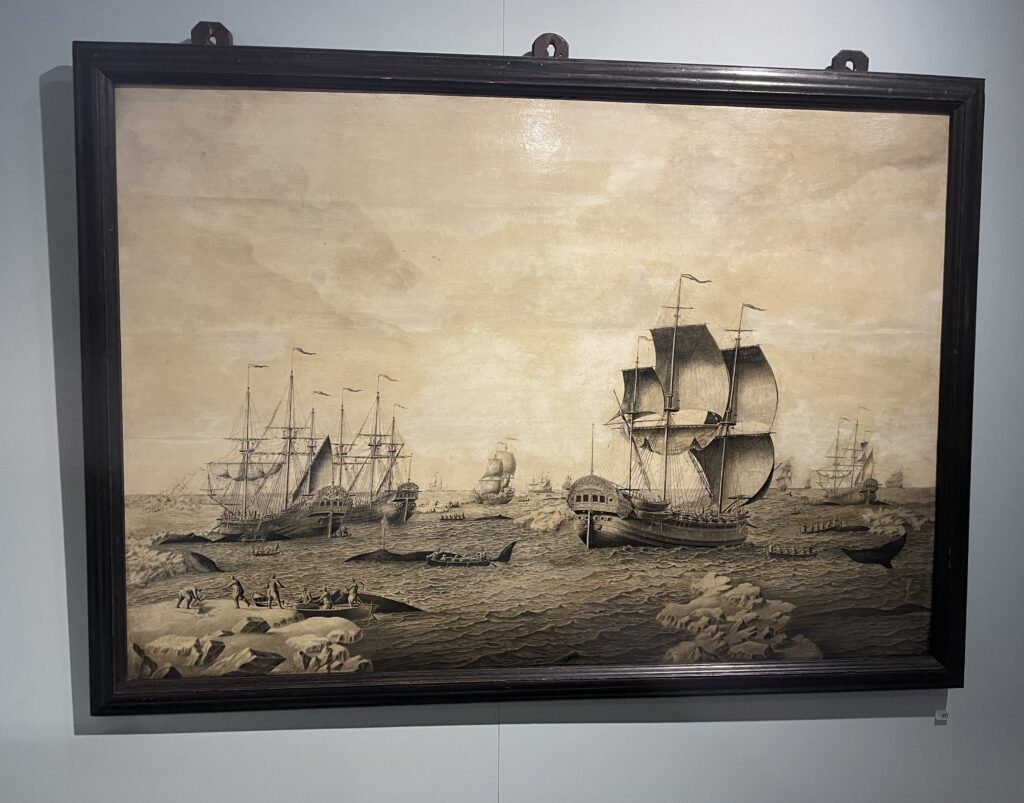
The raw materials that came back with the seamen, like meat, blubber, and bones, were processed in the Zaanstreek. The whale blubber was boiled and this became train oil. It was used as lamp oil or in soap, candles, textile, and leather. The baleen were mostly used in corsets or other clothing, but it is possible that the salad cutlery was manufactured in the Zaanstreek as well.
The profits of whaling for the Dutch became less and less at the end of the eighteenth century. England had gained more power at sea and the role of the Netherlands became less significant in the world. While the Dutch stopped whaling and many other countries as well, Japan, Norway, and Iceland still hunt on whales and they remain endangered species. In summary, salad cutlery made from whale baleen in the Zaans Museum seems very strange at first, but on a closer look it is quite logical that it is displayed in this museum. It is still quite unclear why salad cutlery had been made from this material but it is possible the cutlery was made in this region, because of the long history with whaling.
Written by Carolijn Amesz
